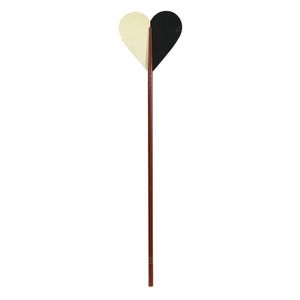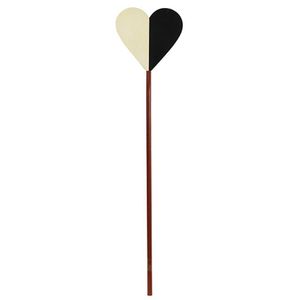Turtle-handled Bakelite walking stick, 1902
An early Bakelite type short walking stick with ivorine handle, the tapering black shaft hand carved and terminating in an ivorine handle carved in the form of a turtle with rhinestone eyes, a tapering silver sleeve at the base of the shaft dated Chester 1902. Length 61.5 cm. Provenance: The Flower Family Collection.
You must be a subscriber, and be logged in to view price and dealer details.
Subscribe Now to view actual auction price for this item
When you subscribe, you have the option of setting the currency in which to display prices to $Au, $US, $NZ or Stg.
This item has been sold, and the description, image and price are for reference purposes only.
- Diamante / Rhinestone - A diamante and a rhinestone are both imitation diamonds made from glass, rock crystal or acrylic. Originally rhinestones were rock crystals mined from the Rhine river Rhine in the 18th century, but the term is now associated with any imitation diamonds. Diamantes and a rhinestones are used in costume jewellery, in clothing and accessories, and were especially popular in the 1930s,
- Bakelite - Bakelite was the first completely synthetic man-made substance. Bakelite was invented in 1909 by an independent New York chemist Leo H. Baekeland. It was called the "material of a thousand uses" and used to make everything from car parts to jewellery.
Although nearly all plastic from this period is known as ?Bakelite', it is important to remember that this is an umbrella term that covers many different early plastics such as Lucite and cellulose acetate, and includes Bakelite.
We often think of the colour of Bakelite items as dark brown, but it was manufactured in various colours including yellow, butterscotch, red, green and brown.
Bakelite could also be transparent, or marbleised by mixing two colours. Plastics were cheap to produce and could be moulded or carved in a huge variety of ways.
Bakelite is most commonly associated with radio cases of the 1930s, telephones and kitchen utensils, but it was also used extensively in jewellery manufacture.
Early designs from the 1920s were plainer and simpler than later examples. Geometric and floral patterns typical of Art Deco styling were popular.
During its heyday in the 1930s, Bakelite jewellery was stocked by the most prestigious stores, such as Saks, Harrods and Macy?s, who dedicated a shop window display to it in 1935.
Coco Chanel featured Bakelite items in her accessories collection and the material was praised frequently in Vogue magazine.
Manufacture of some consumer Items were suspended in 1942 in order to concentrate manufacturing on the war effort.
Small items made of Bakelite are now valuable collectables. Andy Warhol was an avid collector, and when he died in 1987, his pieces sold for record prices at Sotheby's.
This item has been included into following indexes:
Visually similar items

A fine Georgian walking cane with carved ivory greyhound handle and gilt metal collar, 19th century, 85 cm
Sold by
in
for
You can display prices in $Au, $US, $NZ or Stg.

Barry Lett (1940-2017), Hart, stick wooden placard, 186 cm high overall
Sold by
in
for
You can display prices in $Au, $US, $NZ or Stg.

Barry Lett (1940-2017), Hart, stick wooden placard, 186 cm high overall
Sold by
in
for
You can display prices in $Au, $US, $NZ or Stg.

A Malacca walking cane with carved ivory top, 19th century, 96 cm
Sold by
in
for
You can display prices in $Au, $US, $NZ or Stg.
